Some posturing and head-butting continued after the rams moved out of the barn, but the three gentlemen finally seem to have made their peace with one another.
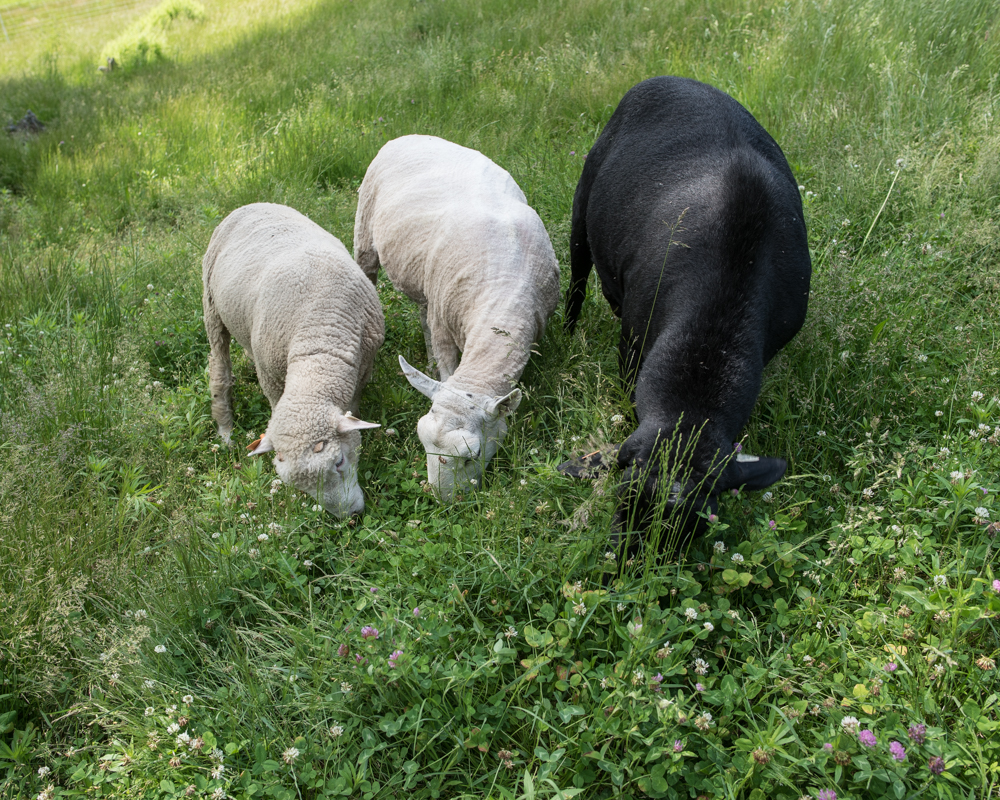
Some posturing and head-butting continued after the rams moved out of the barn, but the three gentlemen finally seem to have made their peace with one another.

I found this nest in the midst of the back pasture over the weekend.
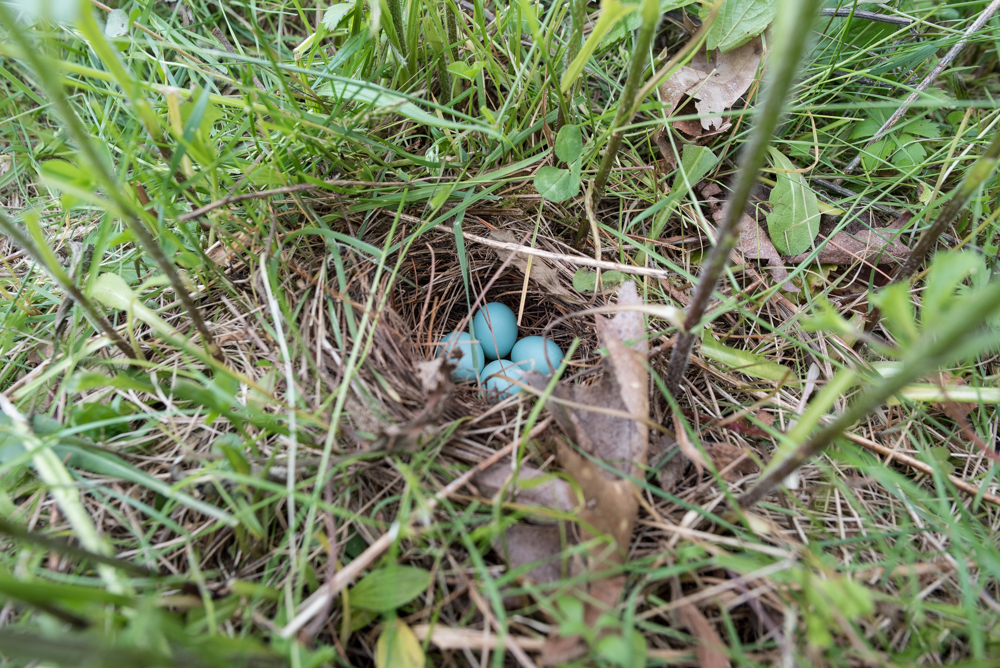
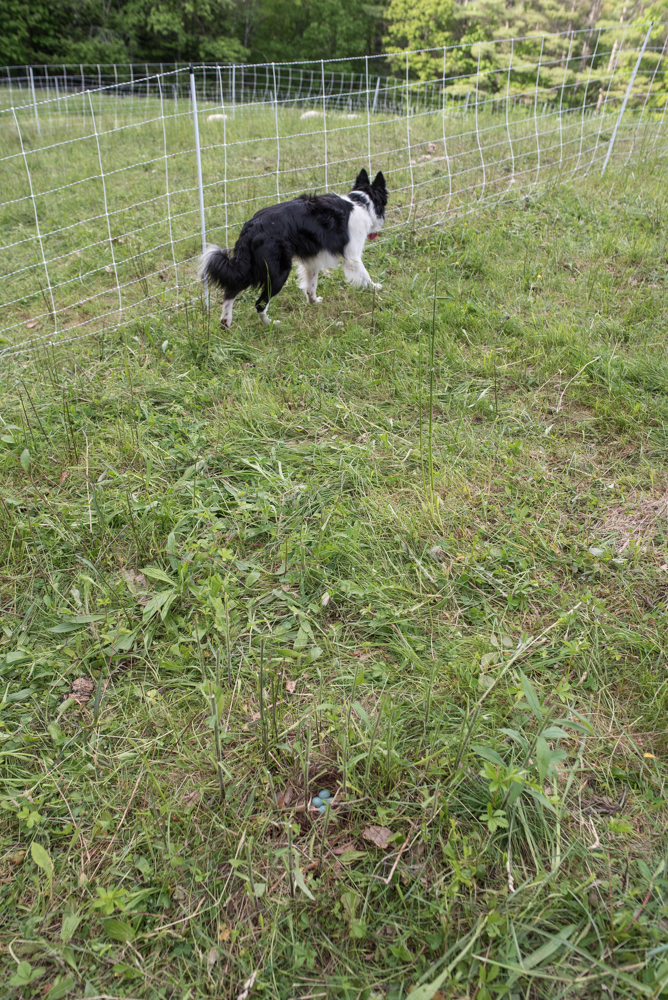
My first thought was to wonder what a robin was doing building a nest on the ground — I’ve only seen them nest a few feet up, in a tree or a building. The eggs looked right for robin, though perhaps a touch small, but then I realized that there was no mud lining the nest, a signature building technique of robins.
After some consultation with more-knowledgable friends, we decided that it was probably the nest of a hermit thrush, a close relative of the American robin. Hermit thrushes nest on the ground, the nest was constructed as I’d expect for hermit thrush, and the eggs, a tiny bit smaller than robin’s eggs, were a good match. The catch was that I’d only known hermit thrushes to nest in the woods, in a well-hidden location appropriate to their name, but the Cornell bird bible suggests that they are sometimes more catholic in their choice of location.
I think the maker of this nest chose the site before my sheep came through and shortened the grass. I’ve been watching the nest area in hopes of getting a positive ID, but haven’t seen anyone incubating the eggs; I fear that the grazing hordes were too much and mom abandoned it. Nevertheless, the woods beyond the nest spot are full of singing hermit thrushes (one of my very favorite bird songs!), so I feel reasonably confident in my ad hoc identification.
Tagged: atypical location, Birdsong, border collie, Catharus gutattus, eggs, grazing, Hermit thrush, Luc, nest, pasture, sheep
Bill Fosher claims that eventually I’ll develop such muscle memory that electronet leaps unbidden from my arms and sets itself into the ground. I’m not there yet. The portable electric fencing I use to enclose grazing areas for the flock is a crucial part of my operation, but it’s also become my principal preoccupation and adversary. It’s a straightforward enough system: a solar fence charger and rolls of plastic net fencing with stainless steel conductors woven through.
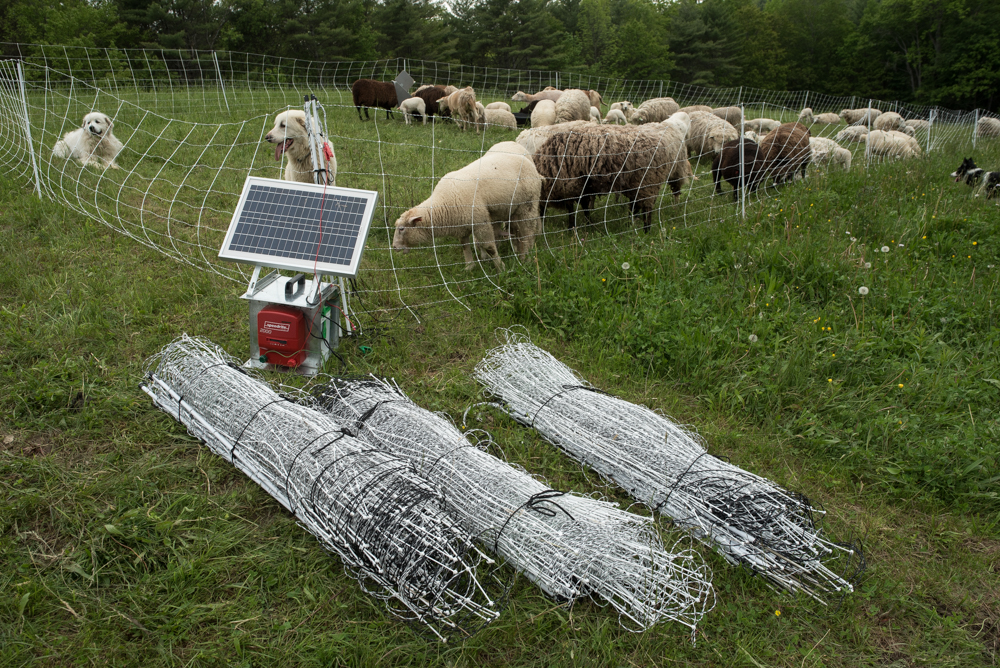 The details, though, reveal that the system was designed by sadists. The rolls of net are sized so that they can be comfortably carried and deployed by someone 6 inches taller and 30% stronger than the one doing the work. The net itself is designed like a ecologically friendly fishing net, allowing squirrels to pass through unimpeded but optimized to snare farmers’ footware. And the fence charger has a handle temptingly located in such a way that no anatomically intact human could use it.
The details, though, reveal that the system was designed by sadists. The rolls of net are sized so that they can be comfortably carried and deployed by someone 6 inches taller and 30% stronger than the one doing the work. The net itself is designed like a ecologically friendly fishing net, allowing squirrels to pass through unimpeded but optimized to snare farmers’ footware. And the fence charger has a handle temptingly located in such a way that no anatomically intact human could use it.
I’ve been setting up big squares of electronet — 164 feet to a side — and then subdividing them into 7 strips, each worth about 12 hours of grazing. This morning I moved the sheep in to the last strip of the previous square, so this evening I needed to set up a new one to start the 3½ day cycle over again. I set up the perimeter first, making sure that my corners all met up before setting the fence upright.
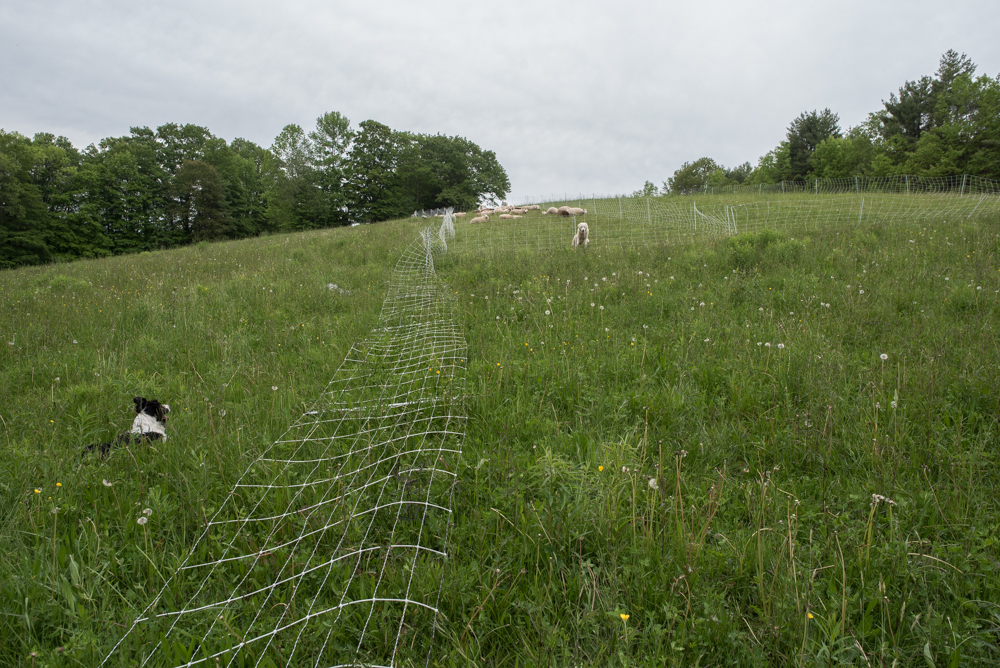 When the big square was complete, I set off the first grazing strip.
When the big square was complete, I set off the first grazing strip.
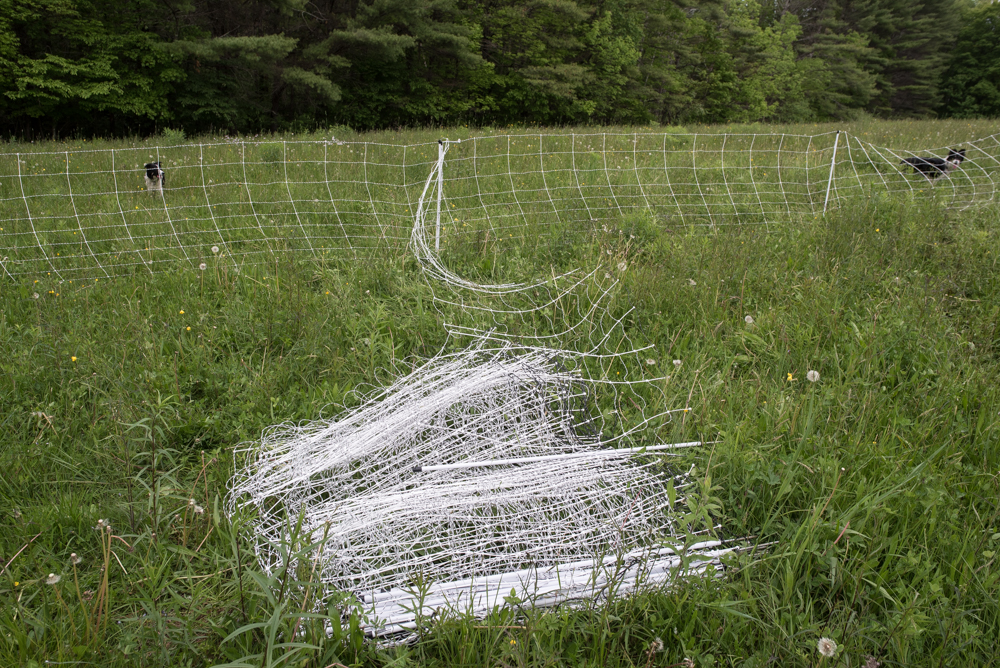
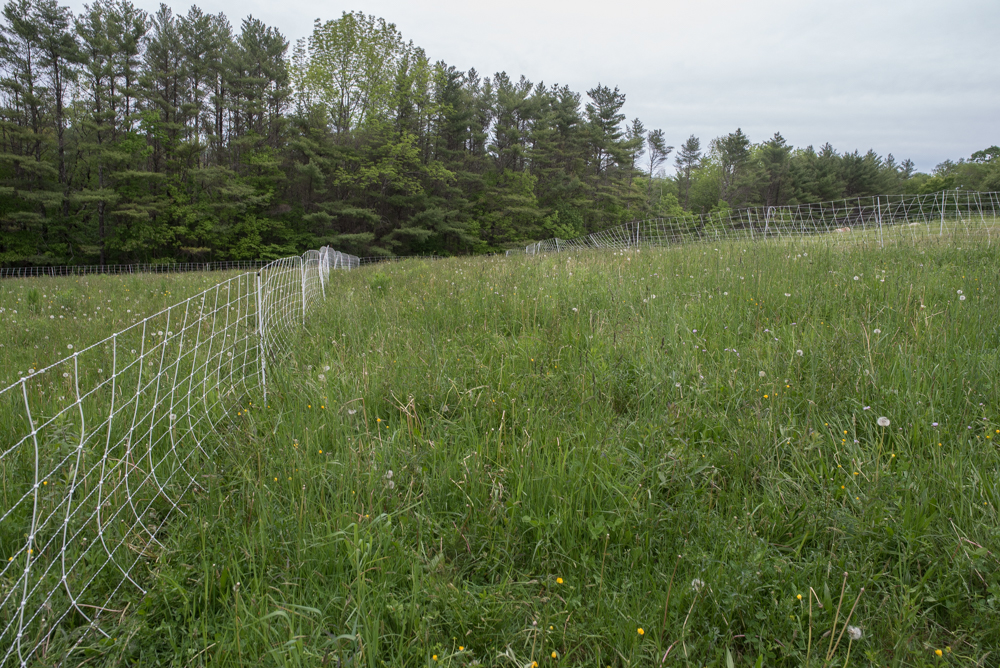 And then moved the sheep down to the fresh pasture.
And then moved the sheep down to the fresh pasture.
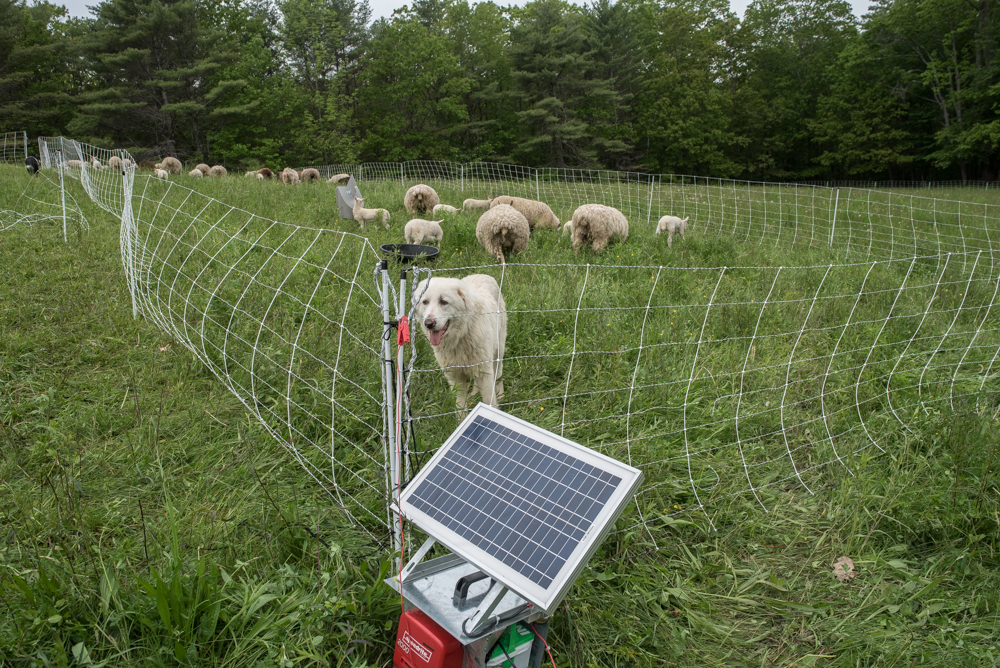 If the sheep eat as much as I expect over night, I’ll move them to the adjacent strip in the morning. Despite my kvetching, I only trip and fall on the net every third or fourth day now. Bill is still much faster than me setting it up, but I’m slowly gaining on him.
If the sheep eat as much as I expect over night, I’ll move them to the adjacent strip in the morning. Despite my kvetching, I only trip and fall on the net every third or fourth day now. Bill is still much faster than me setting it up, but I’m slowly gaining on him.
Tagged: Bill Fosher, bravo, Cass, Chloe, electronet, grazing, pasture, rotational grazing, sadists, sheep, solar energizer, Wellscroft
I’m learning that each season has its preoccupation. In winter, I worried if the snow or ice would keep me from bringing hay to the flock, and during lambing, I worried about lambing. In the early spring, I doubted that the grass would ever start growing (it did), and now I worry how long the grass will last.
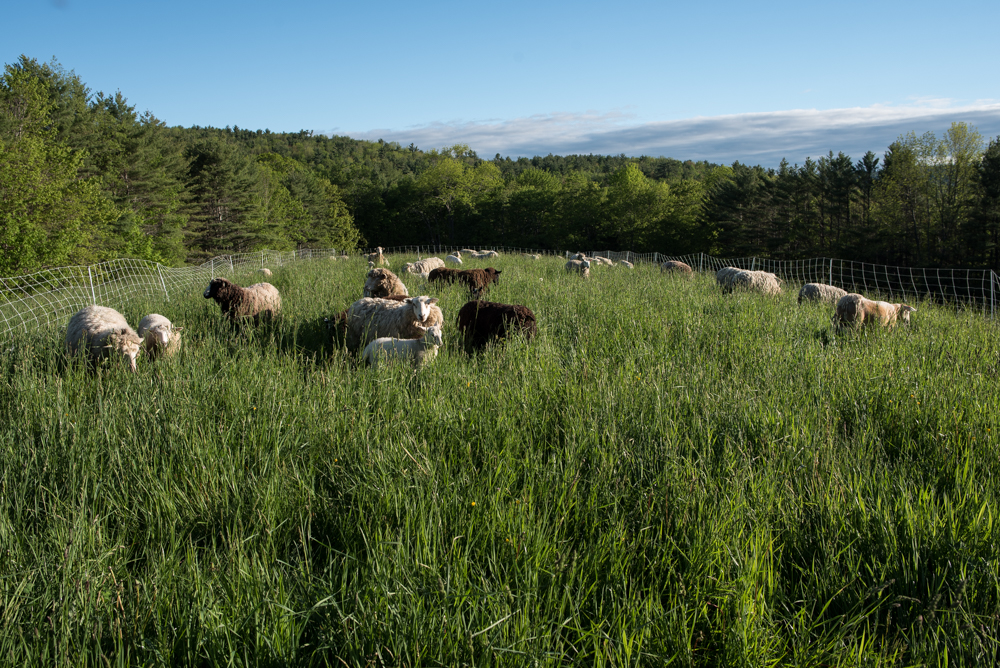 Parts of the back fields now have grass tall enough to hide lambs in, but the sheep also manage to chew through it at a fantastic rate. I’m still figuring out how much they eat every day, and constantly doing calculations in my head about sheep-days per acre, and acres of pasture not yet eaten. I usually come to the conclusion that I either will or won’t have enough. The fields here have been overgrazed and underfed for many years, so I’m trying to feed my sheep while still nurturing the pasture back to health (more on this soon).
Parts of the back fields now have grass tall enough to hide lambs in, but the sheep also manage to chew through it at a fantastic rate. I’m still figuring out how much they eat every day, and constantly doing calculations in my head about sheep-days per acre, and acres of pasture not yet eaten. I usually come to the conclusion that I either will or won’t have enough. The fields here have been overgrazed and underfed for many years, so I’m trying to feed my sheep while still nurturing the pasture back to health (more on this soon).
Several friends and neighbors have offered to let my sheep graze some of their fields for part of the summer, additional grass that makes everything work for my sheep during the early going, but I hadn’t quite figured out how to move my sheep around Sullivan. I have fantasies of walking the flock along public roads to get across town, but I fear neither my herding skills nor the Town of Sullivan is ready for this challenge yet. I have an acquaintance who’s offered to move my sheep in his stock trailer, but at $100 per move, it would be cheaper to feed hay to the flock and keep them home. Earlier this week, Bill Fosher alerted me to an older stock trailer for sale in his town of Surry, and today I brought it home with Bob Jones’s help.
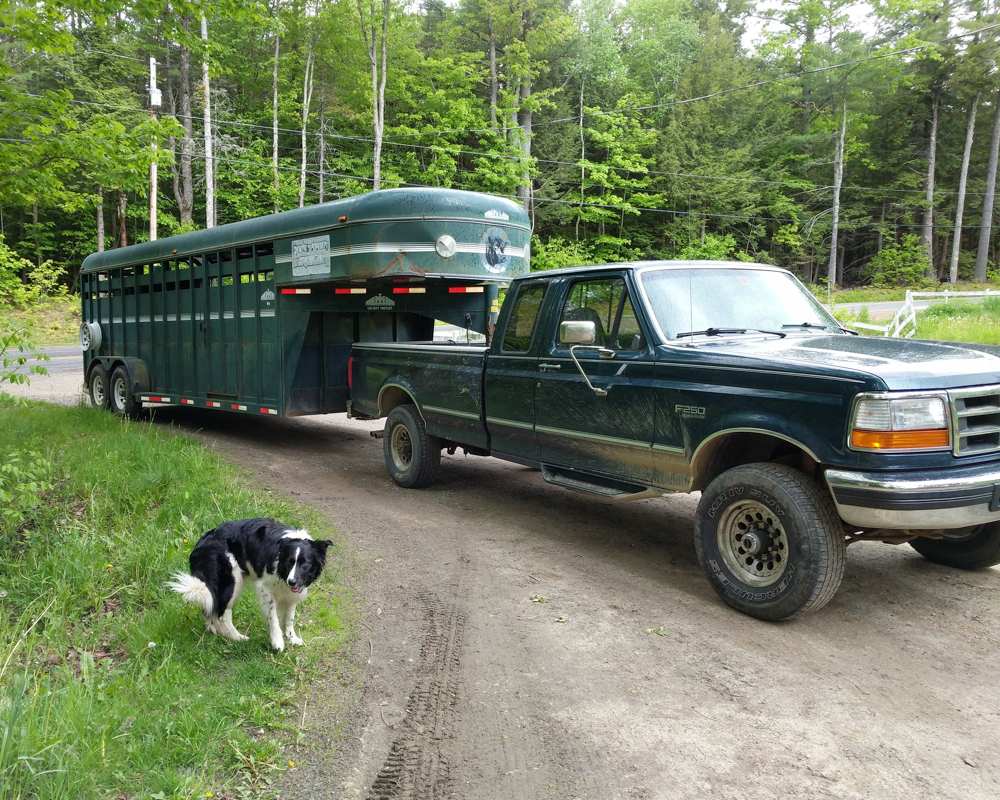
The last step is to sell my little truck so I can buy Bob’s big truck, and then I’ll have the capability to get my sheep wherever there’s grass to be had.
Tagged: Bill Fosher, Bob Jones, Cass, enough, Ford F-250, grass, grazing, Moritz, neighbors, pasture, sheep, stock trailer, Sullivan
I put the sheep to work on the rapidly-growing lawn below the Fortress today.
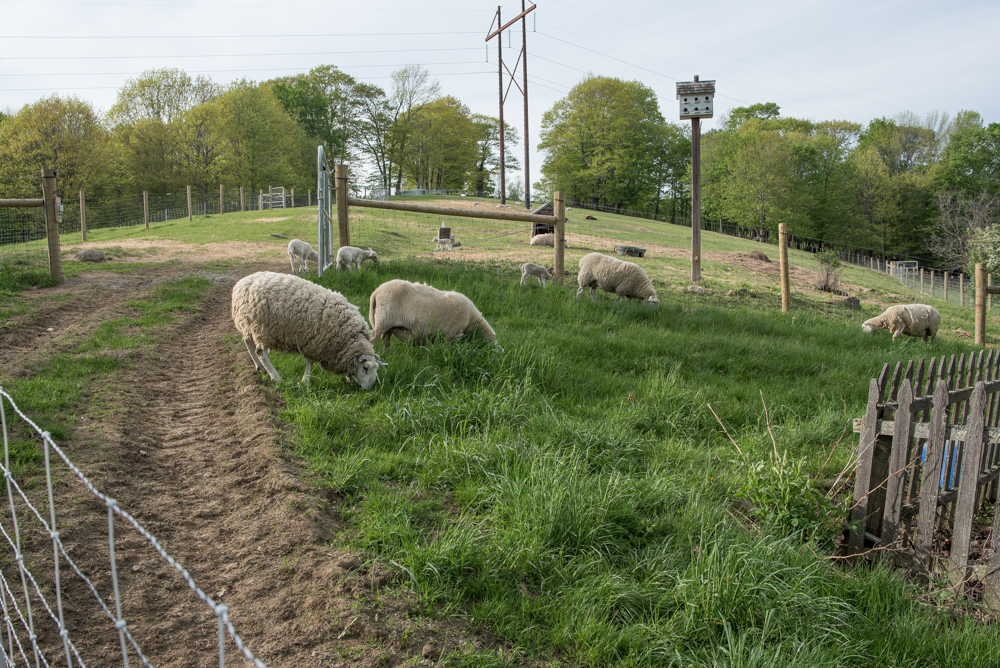 I’m thinking that the days of gasoline-powered lawn mowers are behind me.
I’m thinking that the days of gasoline-powered lawn mowers are behind me.
Tagged: back yard, grazing, happy, Hollow Oak Farm, lawn-mowing brigade, pasture, sheep, tall grass